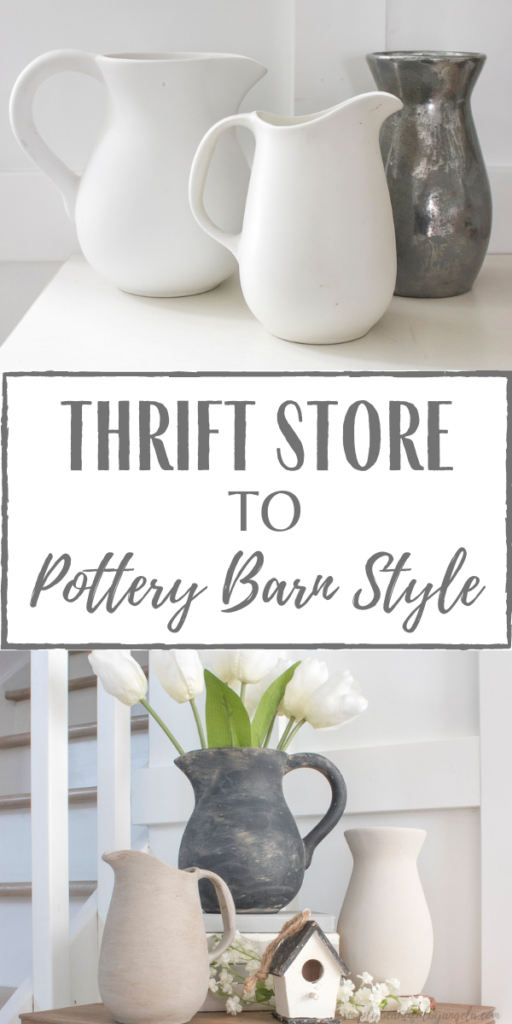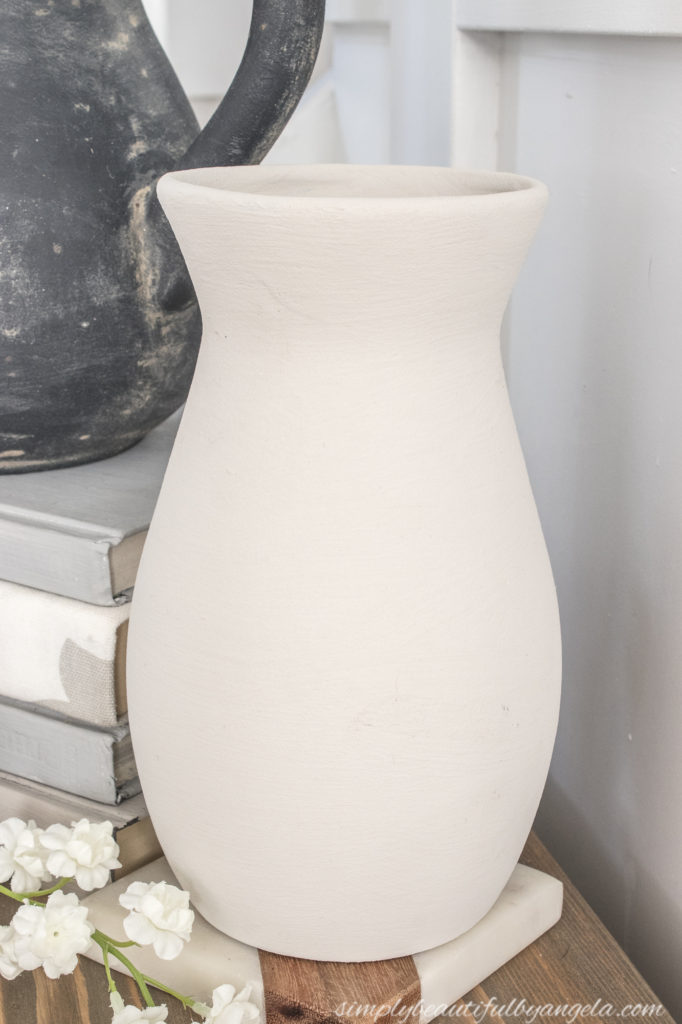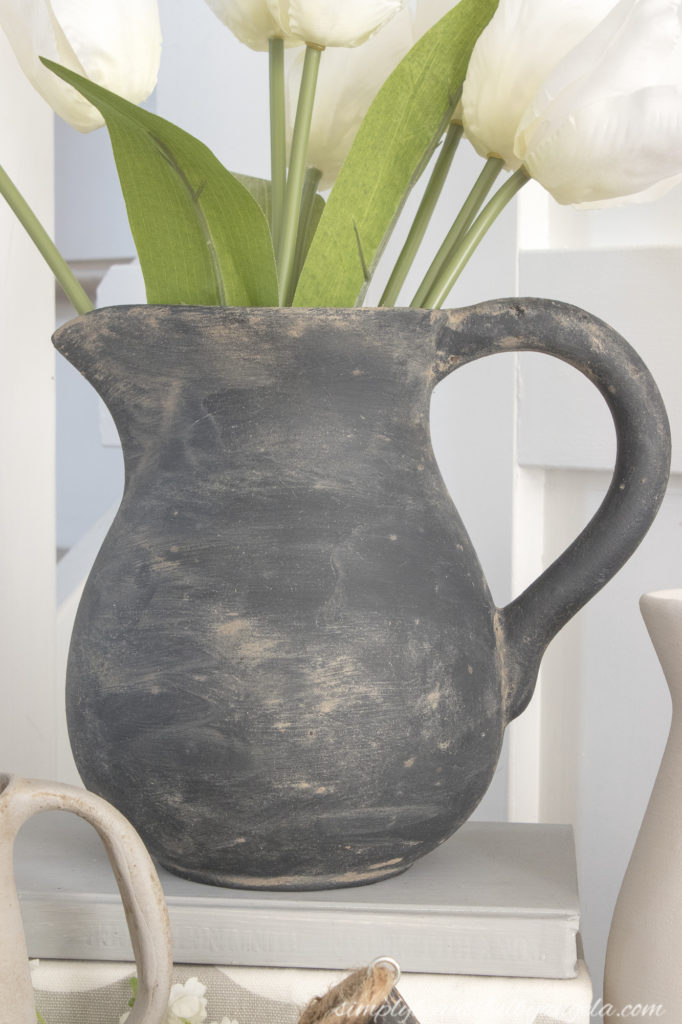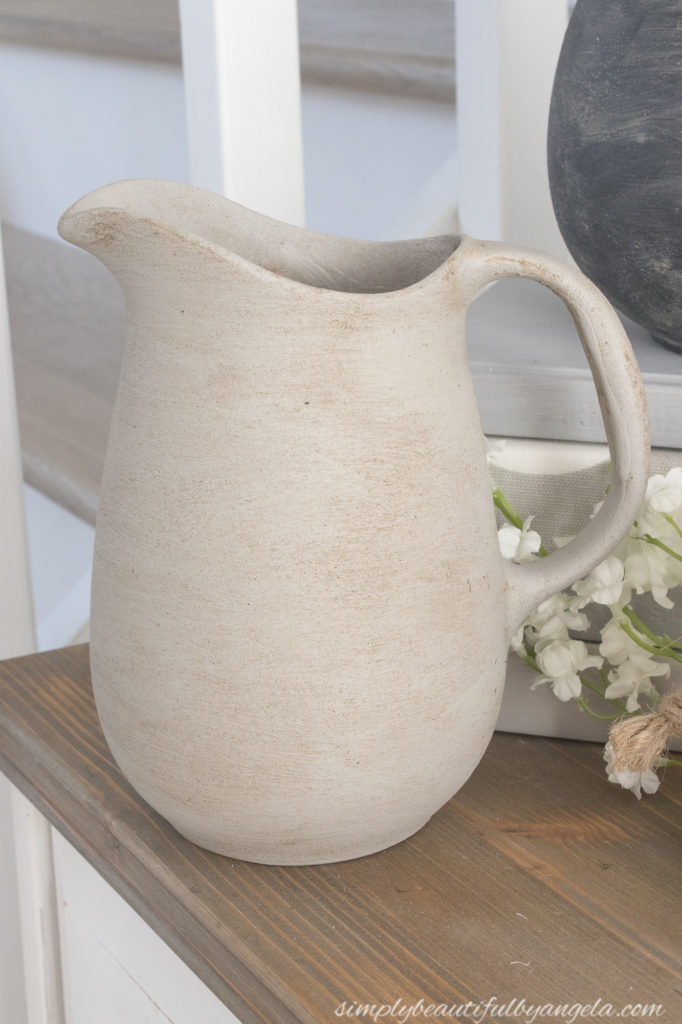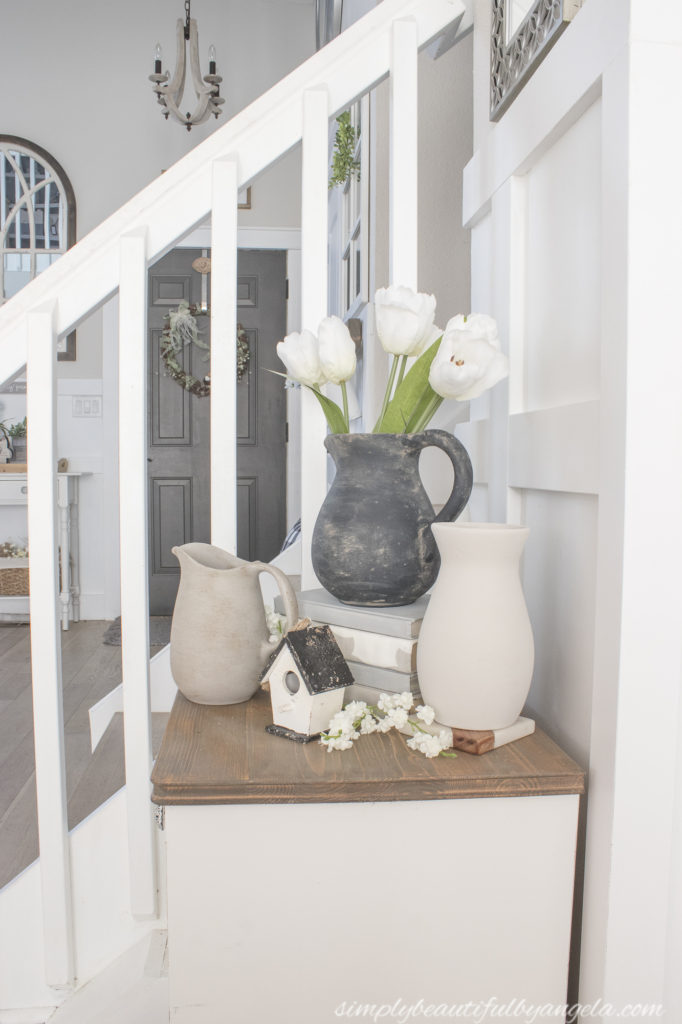Hello friends, happy Thursday! I hope you’ve all had an easy week so far. I am getting pretty tired of the snow that we’ve been getting here lately and am excited for what’s supposed to be a warm and sunny weekend 🙂
For this month’s Thrift Store Challenge I actually wanted to refinish a coffee table that I found a couple of weeks ago. However, since the weather hasn’t allowed me to work outside lately I was forced to work on something else. But I’m actually really thrilled with how this month’s project turned out and can’t wait to share it with you guys!

The Rules:
- Upcycle an item(s) from a thrift store, resale store, or garage sale into a new piece of decor.
- There’s no monthly theme.
- There’s no budget to stick to.
Meet the Hosts
Angela | Simply Beautiful By Angela – Gail | Purple Hues and Me – Marci | Stone Cottage Adventures – Dru | Polka Dot Poplars – Beverly | Across the Blvd – Melynda | Scratch Made Food! & DIY Homemade Household
Our Thrift Store Upcycle group of bloggers is always looking to expand — and we need your help! Why not consider joining in our thrift store upcycle challenge on the last Thursday of each month? Make some friends while having fun and share your love of DIY with the world. It’s a win-win! Sound like something you’d be interested in? Just leave a comment at the end of this post with your contact info and a link to your blog. Someone will get back to you right away. We can’t wait to meet you!
I’m seeing two trends for thrifted vases on Instagram lately and have been absolutely amazed with the results. One is simply mixing baking soda up with paint and using it to turn glass and glazed ceramic into fancy looking pottery. And another is rubbing mud all over and wiping it off to get an aged look. Since I had a couple of thrift store pitchers and a vase that I haven’t been using lately, I decided to test both of these methods out to see if I could achieve the same results.
Supplies Used: (Affiliate links may be provided for convenience. For more info, see my full disclosure here.)
- Latex Paints
- Baking Soda
- Paintbrush
- Mud
Shortest supply list ever right?! Ok, here is what I was starting with.

Pretty nice, but blah. These were all items that I originally got from a thrift store but have grown tired of. They have been hidden in the basement for quite awhile so they were the perfect contenders to get a little refresh.
I’ve seen different proportions for the baking soda and paint combo, I decided to do 1/2 cup of paint and 1/8 cup of baking soda.
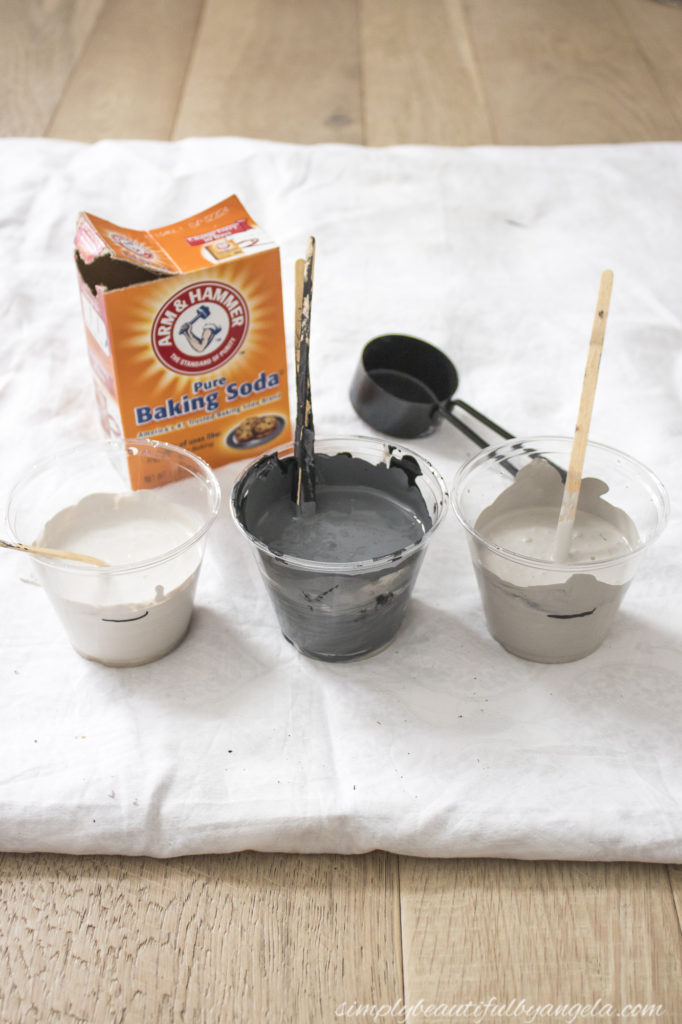
I noticed that the baking soda added a nice thickness to the consistency. Kind of like chalk paint, but rougher. I gave each piece 2 coats and made sure to brush horizontally so that it looked more like pottery. The two white pitchers had been previously painted with spray chalk paint when I first got them, so they seemed to adhere much better than the shiny vase. If I did this again, I would try to sand and prime first.
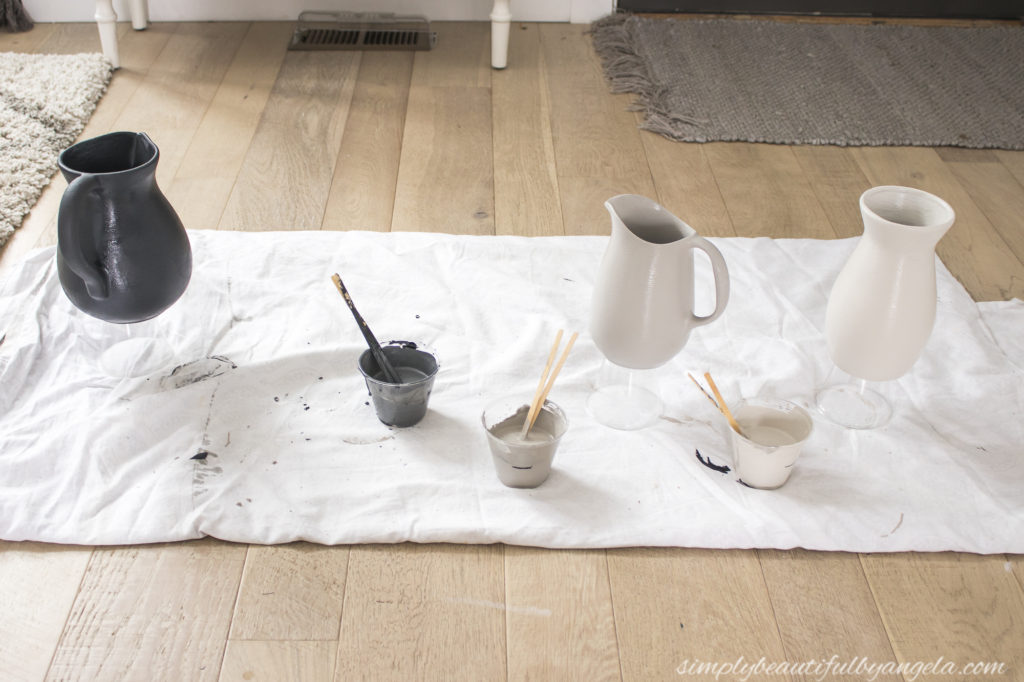
Once the paint had dried for a couple of hours, it was time for mud. I just stepped out front and grabbed some from the front yard and added water until it was a consistency that easily spread on. Then I used my hand to smear it over each piece.
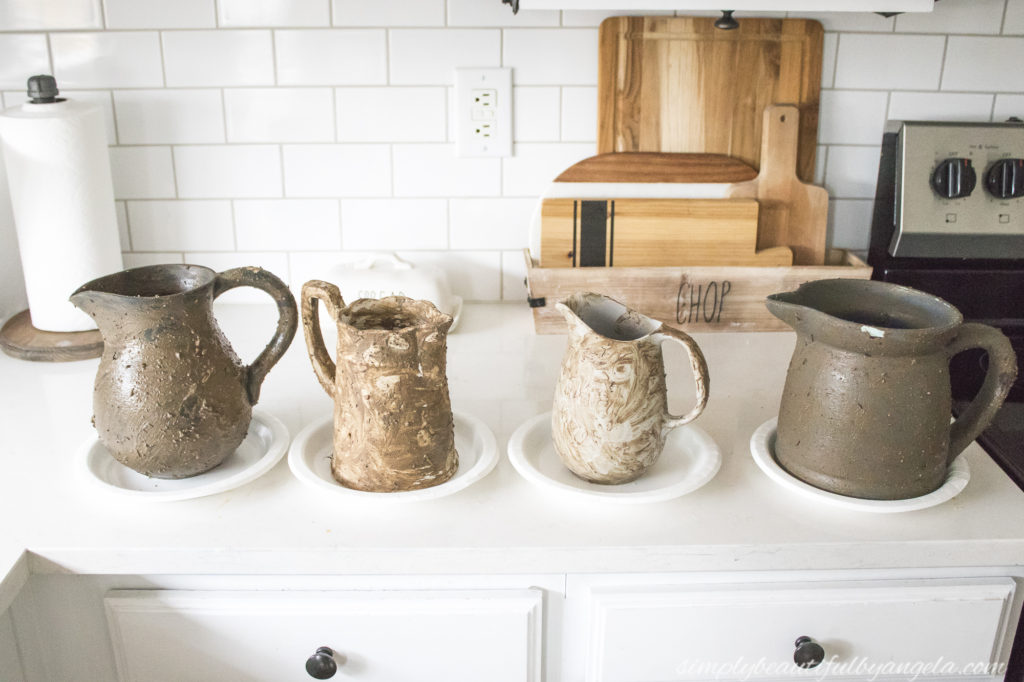
After I had painted the first 3 pieces I had decided to grab a couple of other pitchers to try this on, however they were pretty shiny before I painted them so the paint started to peel up as soon as I started mudding. I was able to touch up one of them, but another one was so bad that I will have to wash/sand it all down and start over if I want to salvage it!
I let the mud dry and then went back over with a damp washcloth to wipe off mud and smooth it out.
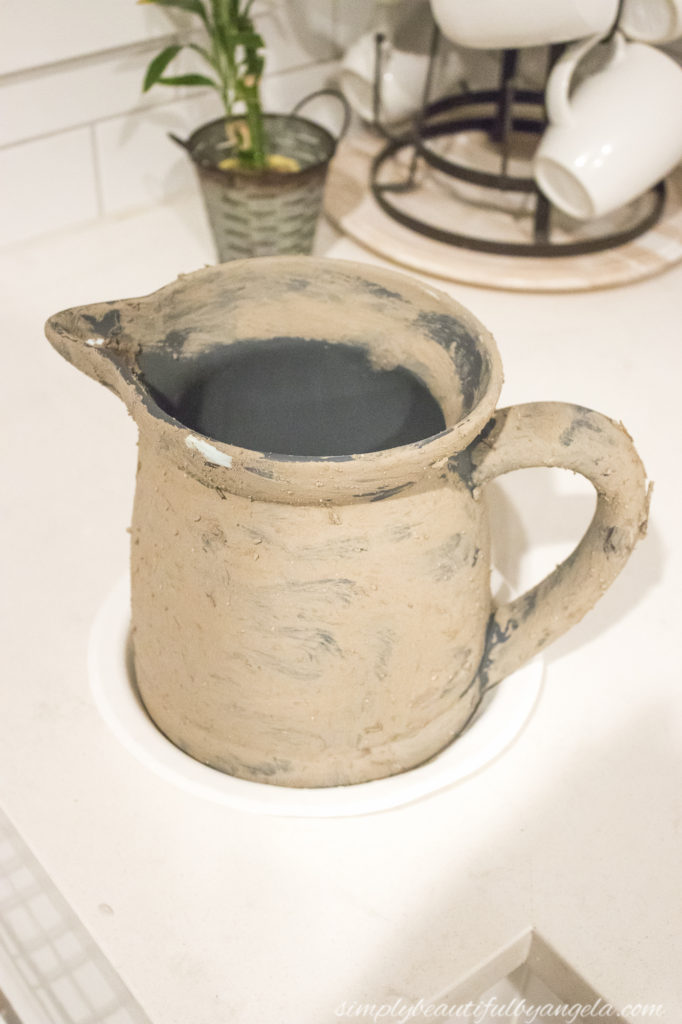
I ended up going back to wipe it down a couple of times and touch up paint until I achieved the perfect look. Here is how they turned out.
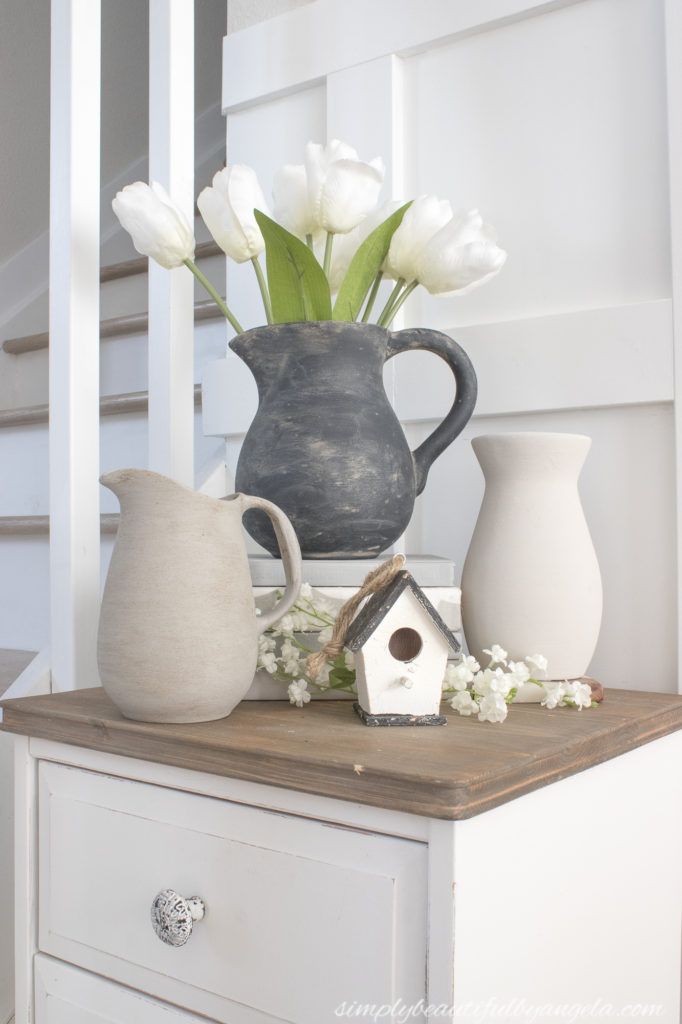
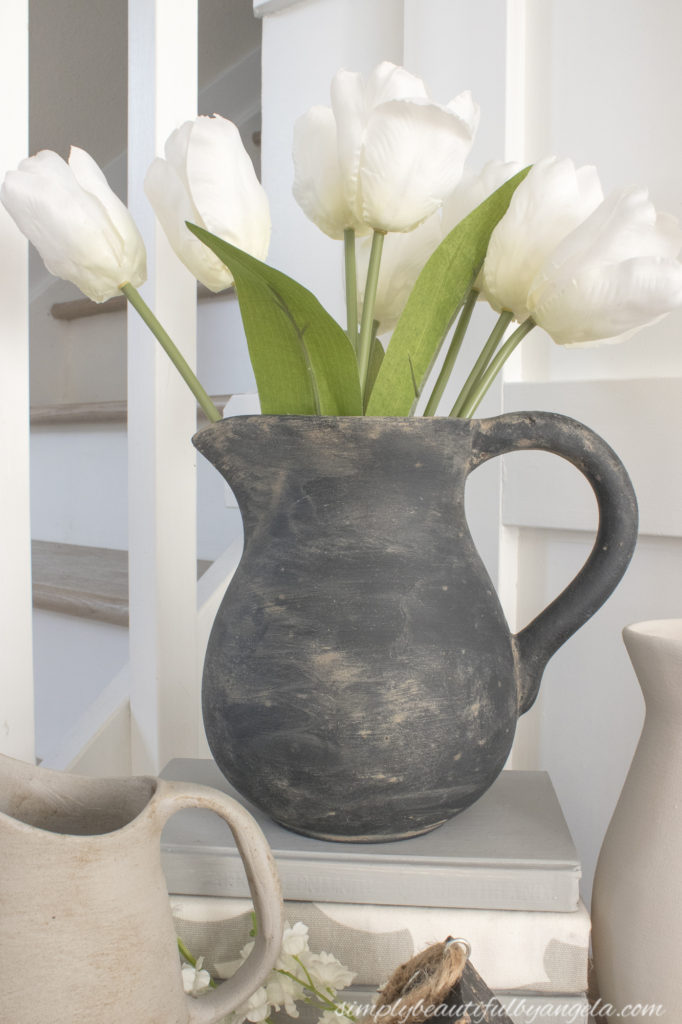
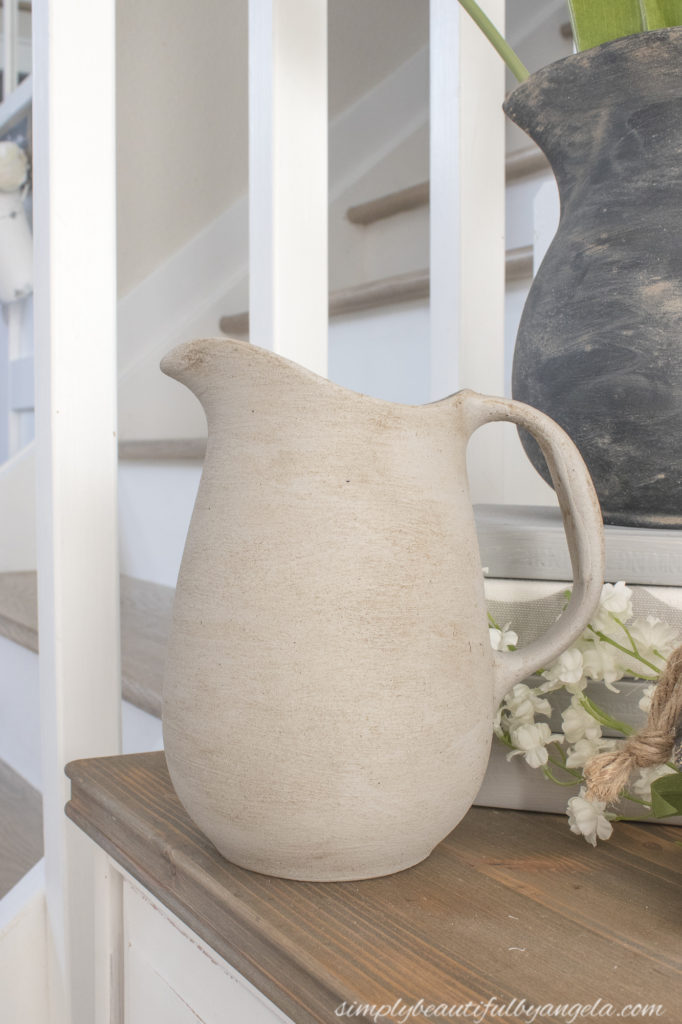
I decided to leave the vase as is and I really love how the rough texture makes it look like a hand crafted pottery piece.
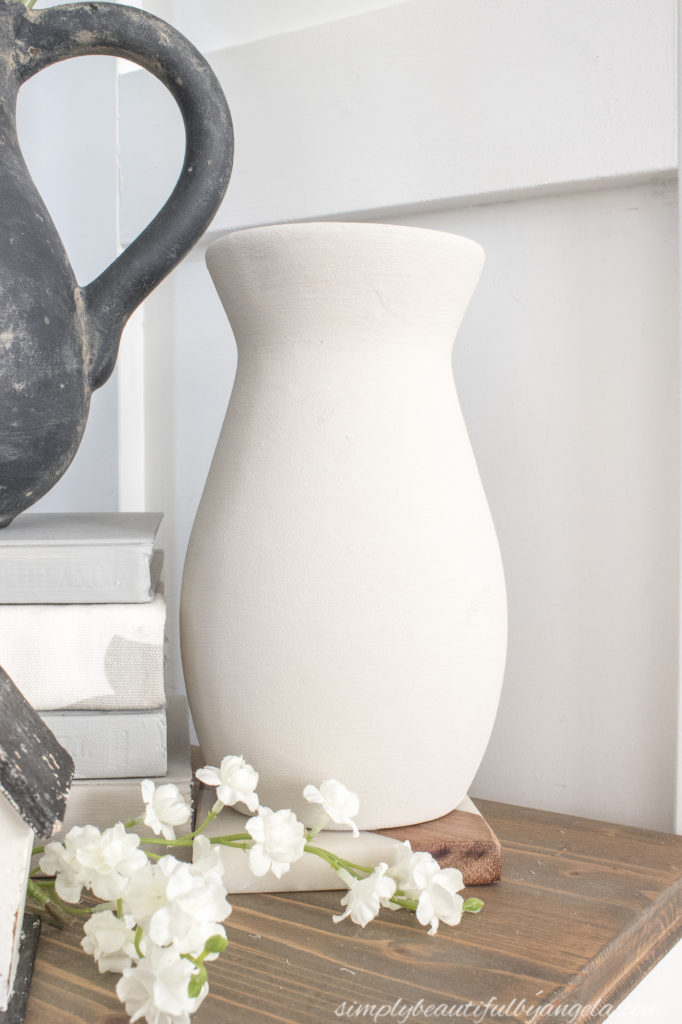
Such a fun new look!
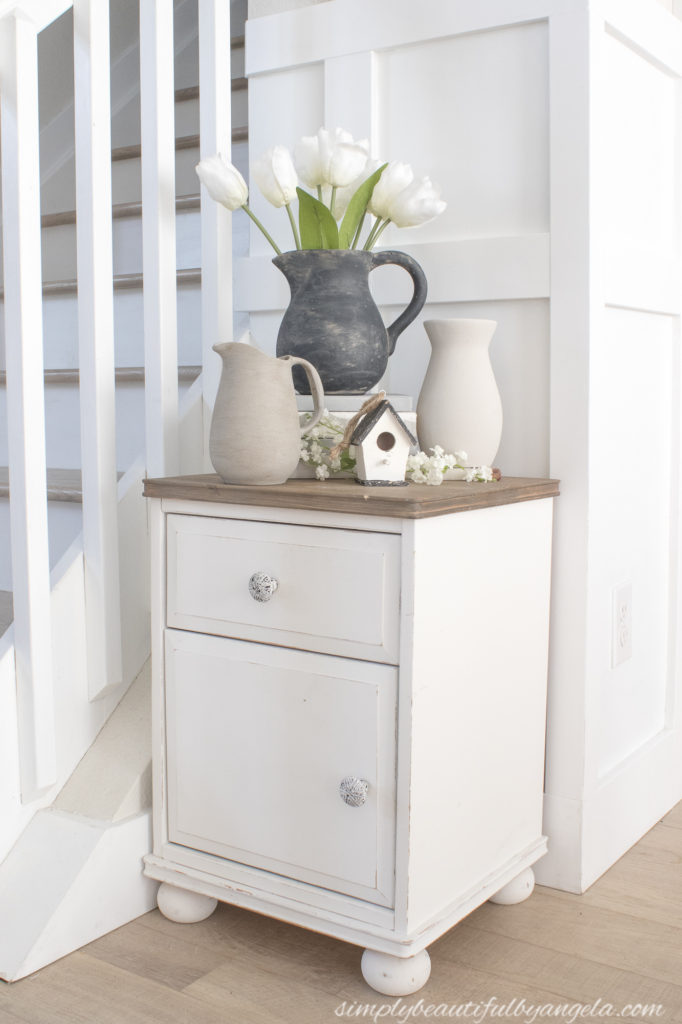
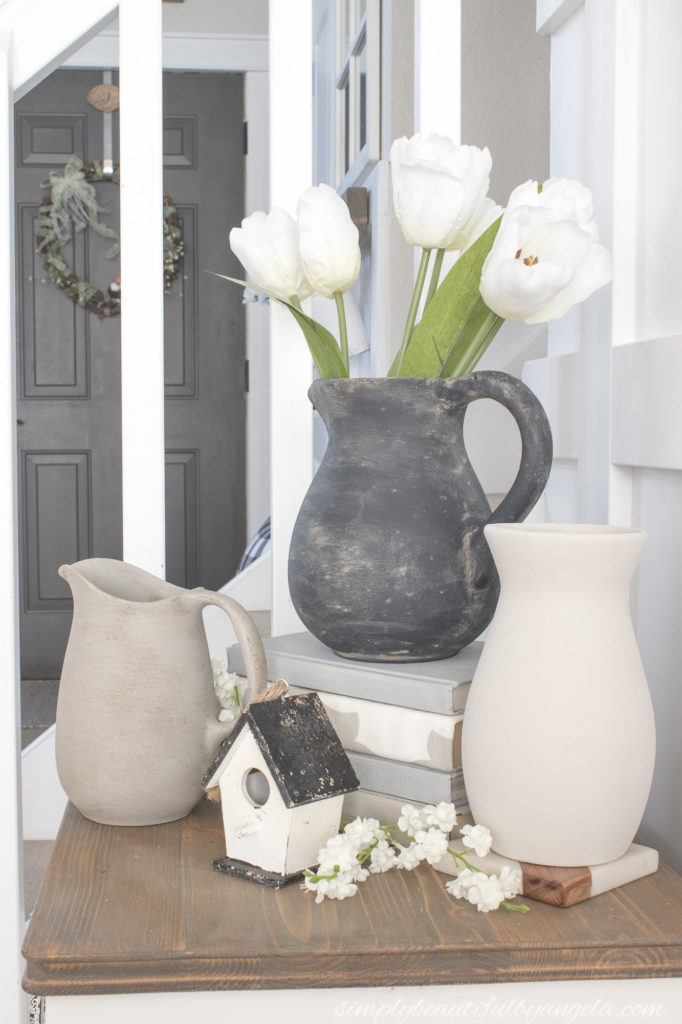
It’s hard to believe that these were once boring pieces from the thrift store.
Thanks for stopping by today!
PIN FOR LATER!
